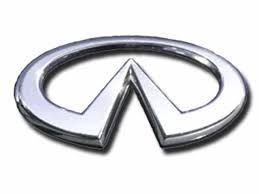Q45t V8-4130cc 4.1L DOHC MFI (VH41) (1997)
/Page-339001.png)
Technical Service Bulletin # 00-027
Date: 000412
Steering - Pull Diagnosis & Repair
Classification:
FA00-002
Reference:
ITB00-027
Date:
April 12, 2000
STEERING PULL DIAGNOSIS AND REPAIR
APPLIED VEHICLES:
All Infiniti
SERVICE INFORMATION
Customers use the term "vehicle pull" to describe several different incidents. This bulletin will identify different types of "vehicle pull" incidents and
provide diagnostic and repair information for each, should they occur. In some cases a vehicle may drift to one side of the road as a normal result of road
crown. Most roads in the United States are built with a "crown" to help rain water drain from the road surface. The slope of the road crown varies from
place to place. In most cases the crown slopes from 1 to 1.5 percent to the right.
Vehicles have a natural tendency to drift to the low side of the crown. The greater the slope of the crown, the faster the vehicle will drift in that direction.
Nissan and other auto manufacturers design tires and position them on the vehicle to provide a small amount of pull to the left. This helps counteract the
effect of typical road crown but may not counteract the effect of a highly crowned road.
Some freeways slope to both the left and right (from the center). A vehicle may exhibit a small amount of pull to the left when driving in the left lane of a
freeway with this condition.
If a vehicle exhibits a pull incident that is not the result of road crown, use the information provided in this bulletin to identify the specific type of vehicle
pull incident, and the appropriate repair.
Incident Description:
Pull
The vehicle consistently drifts to one side while driving at a constant speed (60 MPH) on a straight, flat road. A vehicle is said to pull if it completes a
lane change in less than 7 seconds with no steering correction from the driver when driving (at 60 MPH) on a crown-sloped road of less than 1 percent.
All four wheels must pass into the other lane during this time (7 seconds).
Pull can occur as a result of incorrect wheel alignment, tire condition or steering rack sliding force. It can also occur as a result of excessive tire
"conicity". This refers to a condition when the tire tread surface is not parallel to the axle centerline (see Figure 1). Conicity occurs during the
manufacturing process and the tire may not show noticeable tread wear. When it occurs, it has the affect of the tire taking the shape of a cone. As a
result, the tire has a tendency to roll towards the point of the cone.
The vehicle will pull in the direction of the tire with the greatest conicity. If the tire conicity is equal on both sides of the vehicle, there is no effect on
vehicle pull.
